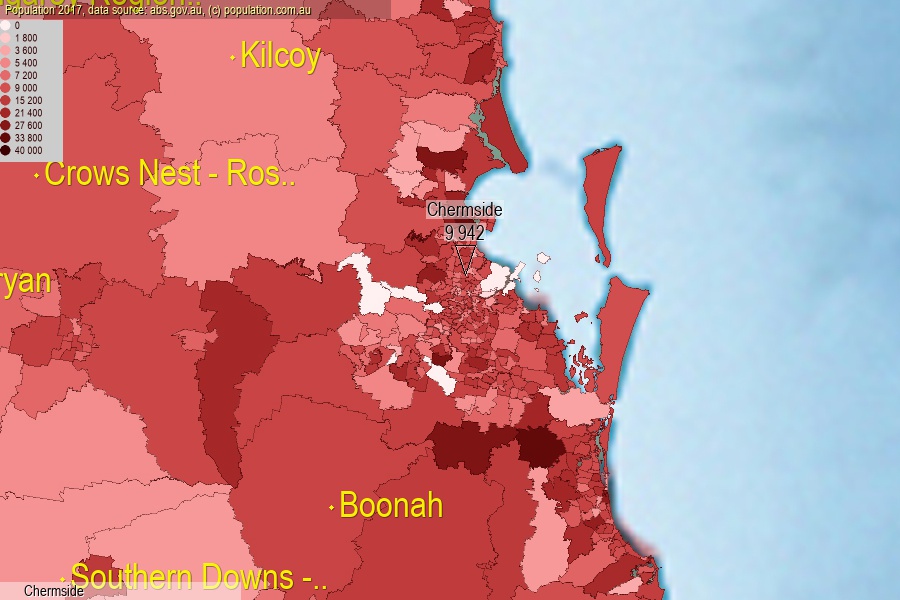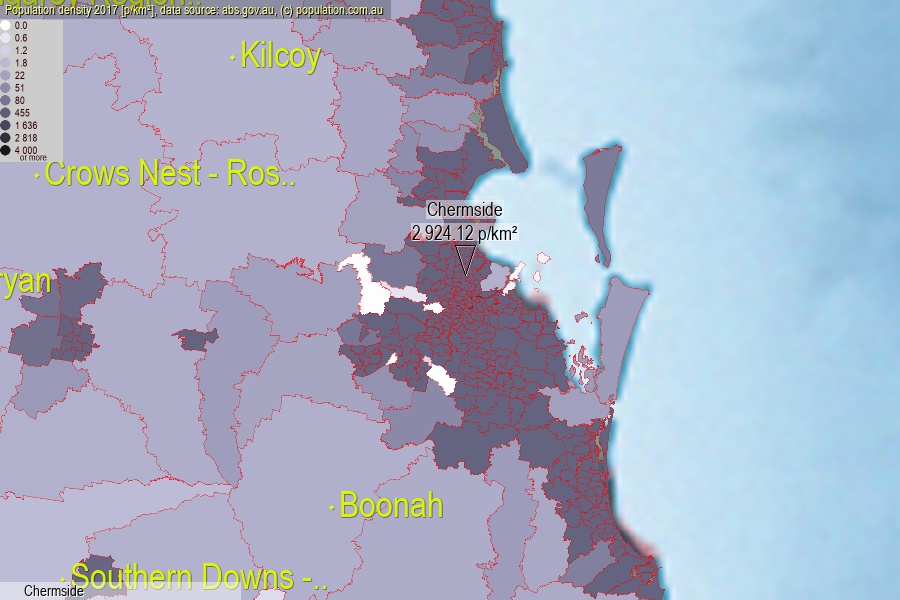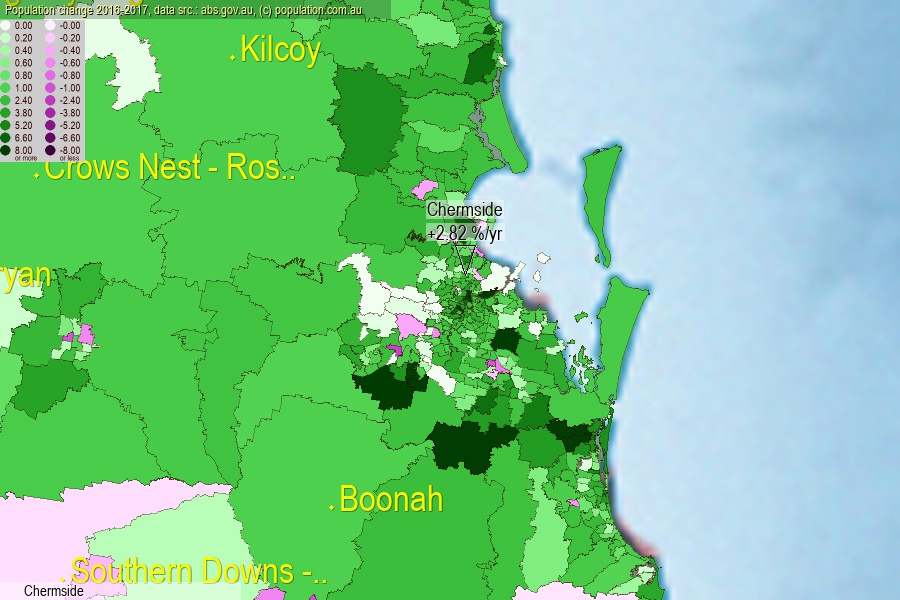 population.com.au
population.com.auLast official estimated population of Chermside (as Statistical Area Level 2) was 9 942 people (on 2017-06-30)[2]. This was 0.04% of total Australian population and 0.199% of QLD population. Area of Chermside is 3.40 km², in this year population density was 2 924.12 p/km² . If population growth rate would be same as in period 2016-2017 (+2.82%/yr), Chermside population in 2025 would be 12 423. [0]



Click to enlarge. Chermside is located in the center of the images.
Population [people], population density [p./km²] and population change [%/year] [2]
View borders » (new window) [4]
[1991-1992] -1.46 %/Yr.
[1992-1993] -1.26 %/Yr.
[1993-1994] -0.53 %/Yr.
[1994-1995] -0.89 %/Yr.
[1995-1996] +0.30 %/Yr.
[1996-1997] -0.71 %/Yr.
[1997-1998] +0.71 %/Yr.
[1998-1999] -0.40 %/Yr.
[1999-2000] +0.49 %/Yr.
[2000-2001] +1.63 %/Yr.
[2001-2002] +1.97 %/Yr.
[2002-2003] +1.07 %/Yr.
[2003-2004] +1.14 %/Yr.
[2004-2005] +2.63 %/Yr.
[2005-2006] +0.34 %/Yr.
[2006-2007] +5.88 %/Yr.
[2007-2008] +6.38 %/Yr.
[2008-2009] +5.81 %/Yr.
[2009-2010] +4.08 %/Yr.
[2010-2011] +6.45 %/Yr.
[2011-2012] +2.16 %/Yr.
[2012-2013] +2.68 %/Yr.
[2013-2014] +2.19 %/Yr.
[2014-2015] +1.84 %/Yr.
[2015-2016] +3.26 %/Yr.
[2016-2017] +2.82 %/Yr.
[0] Calculated with linear interpolation from officially estimated population
[1] Read more about SA2 and Australian Statistical Geography Standard (ASGS) on abs.gov.au
[2] Population data from Australian Bureau of Statistics (Population and density: 2017; change: 2016-2017)
[3] Digital Boundaries: Australian Statistical Geography Standard (ASGS) 2016.
[4] Border coordinates are simplifyed using Ramer-Douglas-Peucker algorithm.